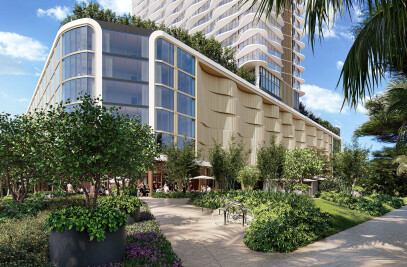Hangzhou Winland Center is located on the bank of the Grand Canal, a UNESCO World Heritage Site, and is adjacent to the Xiangji Temple with a thousand-year history.
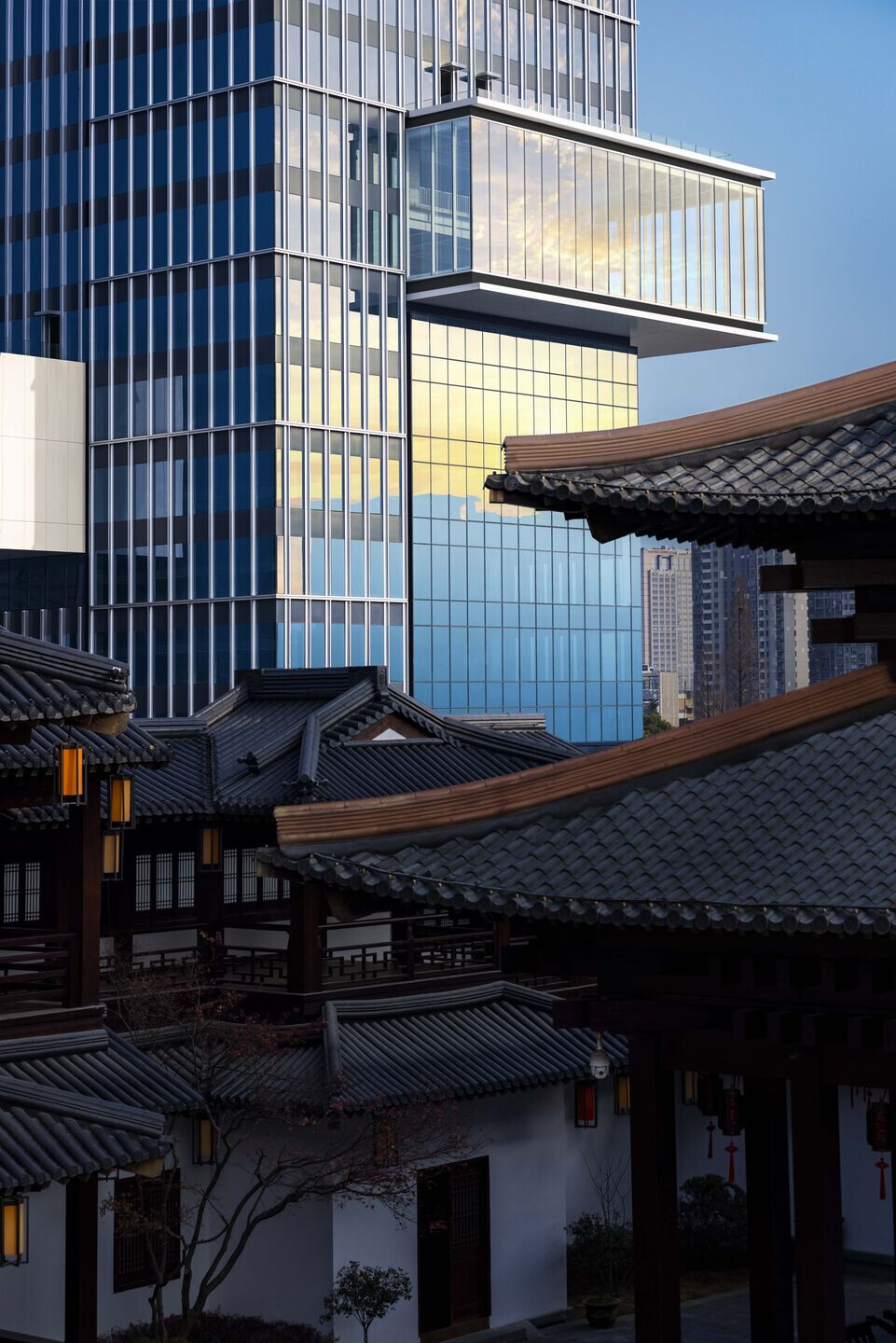
In accordance with the theme of "Sublimate the temples", ARQ designed the project with the premise of preserving the grace of the temple. By interpreting the spatial layout of traditional Chinese buildings with modern methods, a group of new modern buildings perfectly integrates with the surrounding circumstance, such as the history, humanity and nature around the ancient temple.

The whole project is not only a project about rescue and preservation, but also an exploration of urban issues. It is exemplary and valuable in the aspect of public welfare as ARQUITECTONICA is able to establish a harmonious coexistence between the new complex and the old city. It not only protects the historical and cultural heritage, but also the natural ecology of the entire region. Moreover, it is a dialogue between tradition and future.
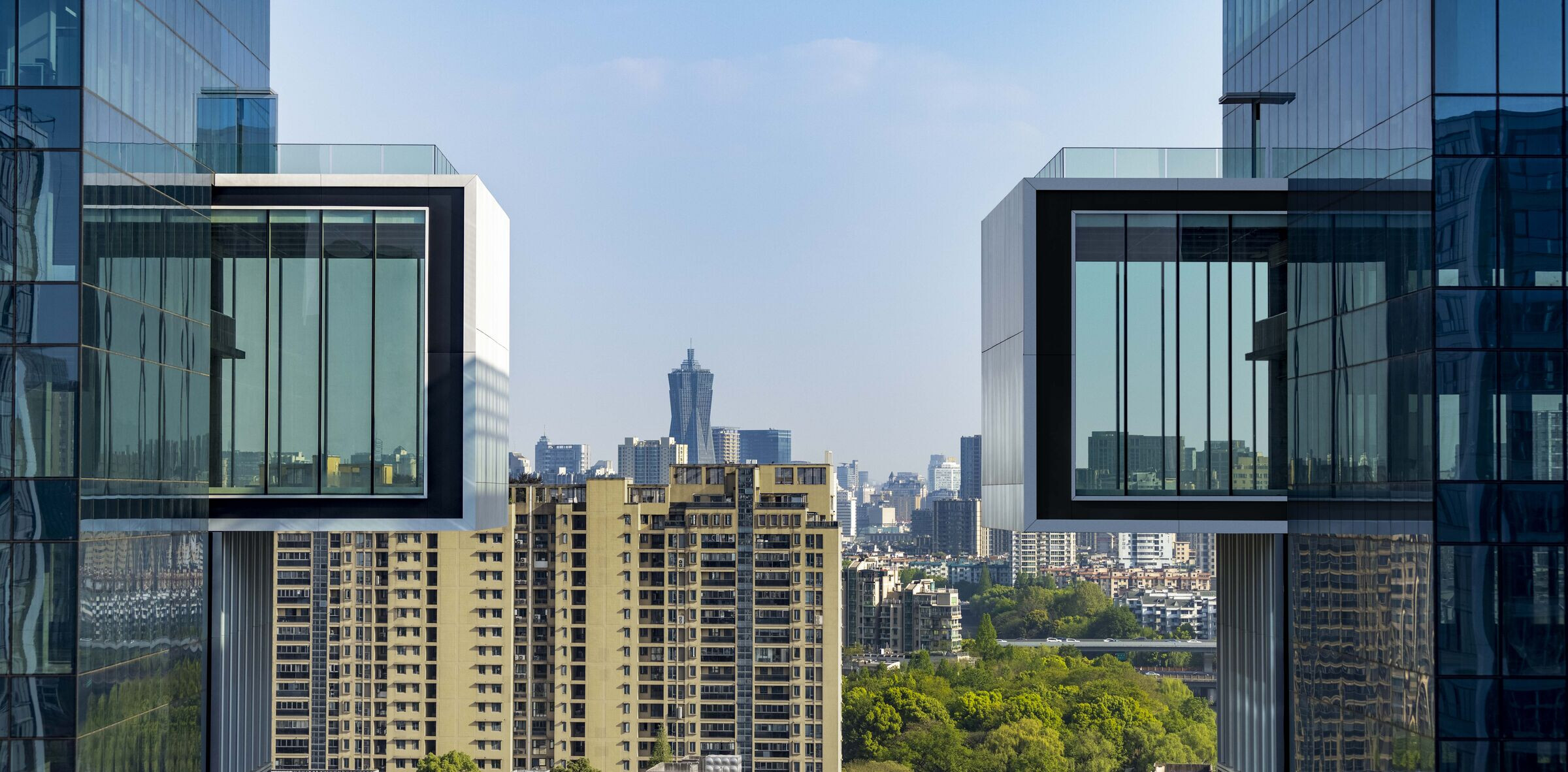
01 Design Principles: Respect and Comity
The plot of Winland Center is not only located along the Grand Canal and adjacent to Xiangji Temple, but also has rich historical contexts such as Fuyicang, Jiangzhang Bridge, Qianlongfang, and Dadou Road historical and cultural blocks.The entire project and Xiangji Temple are only separated by a 24-meter wide Lishui Road. On one side of the road, It is a historical temple with a height of 14.69 meters. While the other side of the road is the modern building complex with a planned height of 80 meters.If the temple and complex are built adjacent to each other, such a height and volume is bound to give Xiangji Temple and surrounding area an irreversible sense of oppression.
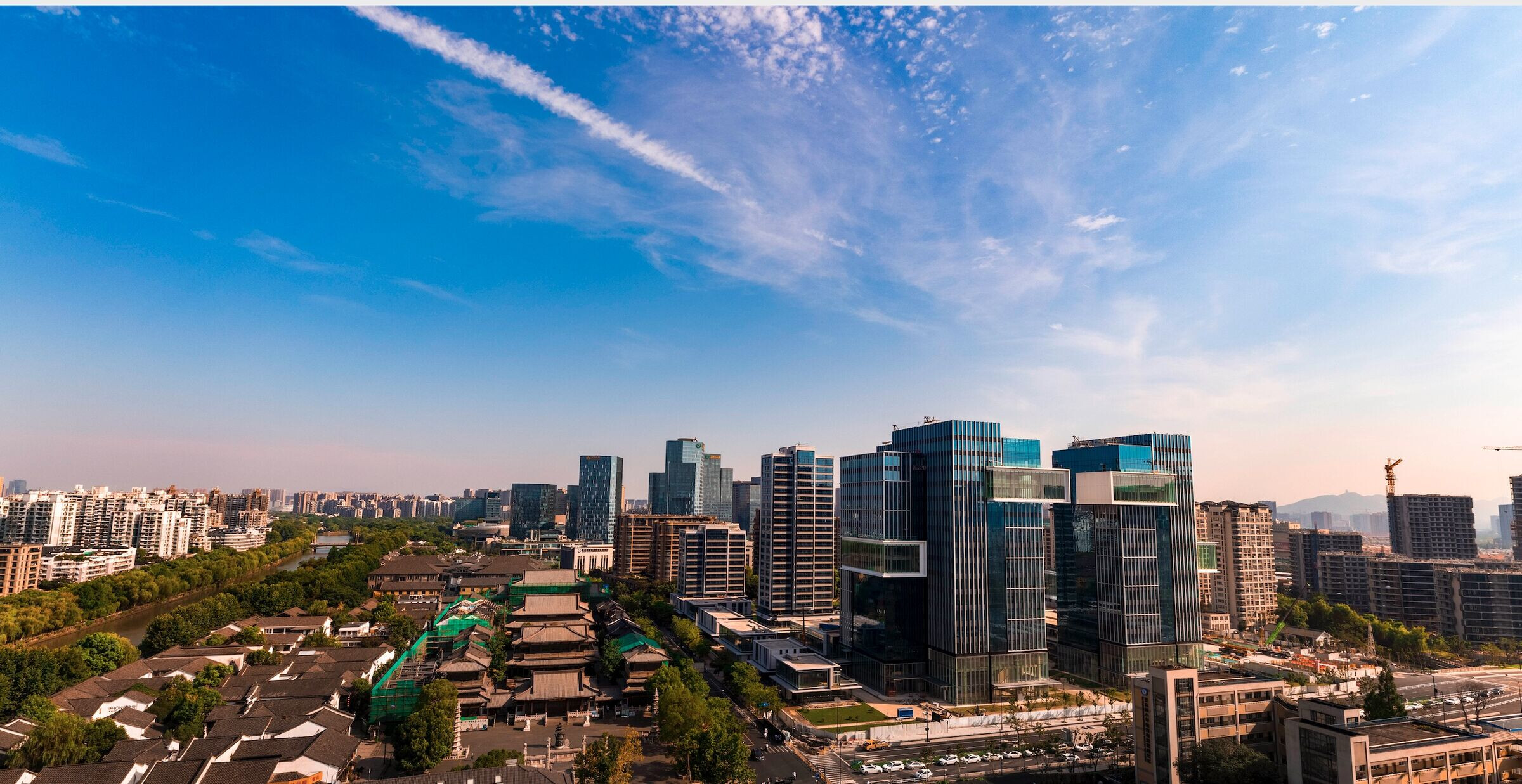
Therefore, in order to fully respect and be courteous to the surrounding historical context and natural environment, the design withdraws the volume of the high-rise building by 30 meters setback from the red line of the site. The withdrawal respectfully yielded to the Xiangji Temple, and minimized the impact of the high-rise buildings on the temple and the entire history and culture along the canal. By yielding the space to Xiangji Temple, the temple is able to be included in the skyline of the city, refining the grace of the temple and sublimating the traditional structure.

1. Taking the initiative 30 meters setback creates an abundant space for the project, temple and the surrounding urban environment. The 9-meter-high building complex is similar in size to the Xiangji Temple at the other side of Lishui Road. On the scale of humans, it demonstrates the beauty of the contrast between ancient buildings and modern complexes, and creates a harmonious neighborhood relationship.
2. Taking the initiative 30 meters setback also means a huge design challenge. After setting back for 30 meters, a lower-rise building with a height of 9 meters was built in the area to replace the originally planned 80 meters high-rise, which increased the tensity of the remaining construction land. Therefore, the floor plan needs to consider precisely about the density, scale, people’s flow, circulation, planning conditions and their relationship with each other in order to create exquisite architectural works without losing too much floor area ratio.

3. The relationship between high-rise buildings, low-rise buildings and the temple is also the focus of the design. With the 9-meter-high small-scale buildings on the side of Lishui Road, the scale of the project gradually transits from skyscrapers to city’s streets. At the same time, the 9-meter-high buildings are connected in series to form a gallery street, bringing art, culture and fashion into the block, forming a contrast between traditional culture and contemporary culture along both sides of the street.
On the basis of taking the initiative 30 meters setback, ARQ Architecture Office takes traditional Chinese three-entry compound space layout as the precedents. Absorbing the symmetrical layout of Xiangji Temple and the texture of the Dadou Road Historic District, the axis of traditional layout and public space create a dialogue of space and time.

02 Master-planning:Transforming Old into New
From Beijing to Hangzhou, from the Forbidden City to Xiangji Temple, the buildings at both ends of the canal both adopt the spatial layout of the three-entry compound. The spatial layout with the clear logic is the essence of traditional Chinese architectural culture.The same layout concept is integrated into the overall planning of the Winland Center.Referring to the architectural layout of the Chinese courtyard, ARQ Architects set up five axes of "two vertical and three horizontal" in the site, and regarded them as the main circulation lines in the site. The five axes also created a sense of ''Three entry Courtyards", embellishing the whole project with the spirit of Chinese traditional culture.The north-south main axis - the main axis creates a progressive space experience starting from the urban space, to the extroverted cultural and commercial space. Then the space transits from commercial space to the introverted residential space.

The north-south sub axis - the sub axis adjacent to Gallery Street, connecting the main building complex with the small-volume gallery complex which is located next to the Xiangji temple.Three horizontal circulations - the three circulations run through the east-west direction, connecting areas with different functions, and efficiently guide the flow of people.The circulation line on the south is the main ground circulation leading the crowd to the Xiangji Temple; the circulation line in the middle is the main one for commercial area, crossing the center of the entire commercial plaza, connecting the sunken square, basement and subway; the circulation line on the north is the main flow line to enter the residential area. It is connected to the subway and bus station in the east. By going westward, people can pass through the cultural block of Dadou Road to the Beijing-Hangzhou Grand Canal.Along the longitudinal main axis of the site, three themed squares share a progressive connection from south to north, forming a vertical connection spatially. High-rise and low-rise buildings are distributed around them, creating the concept of the courtyard in the scale of a modern city.

The three courtyards share different characteristics, serving as the space for cultural activities, office, leisure, business, and high-end residential lifestyle. from south to north, the transition from public to private also enriches the experience of variety in the complex. At the same time, they also serve as an important space for people to gather and entertain, bringing vitality to the entire block.Beyond the progressive planning with the basis of five axes, three courtyards, the design also reserves space for culture and art, creating multi-dimensional public open space to benefit citizens and society. It will become an open neighborhood with the spirit of modern cities and focal point for modern art and contemporary lifestyle.
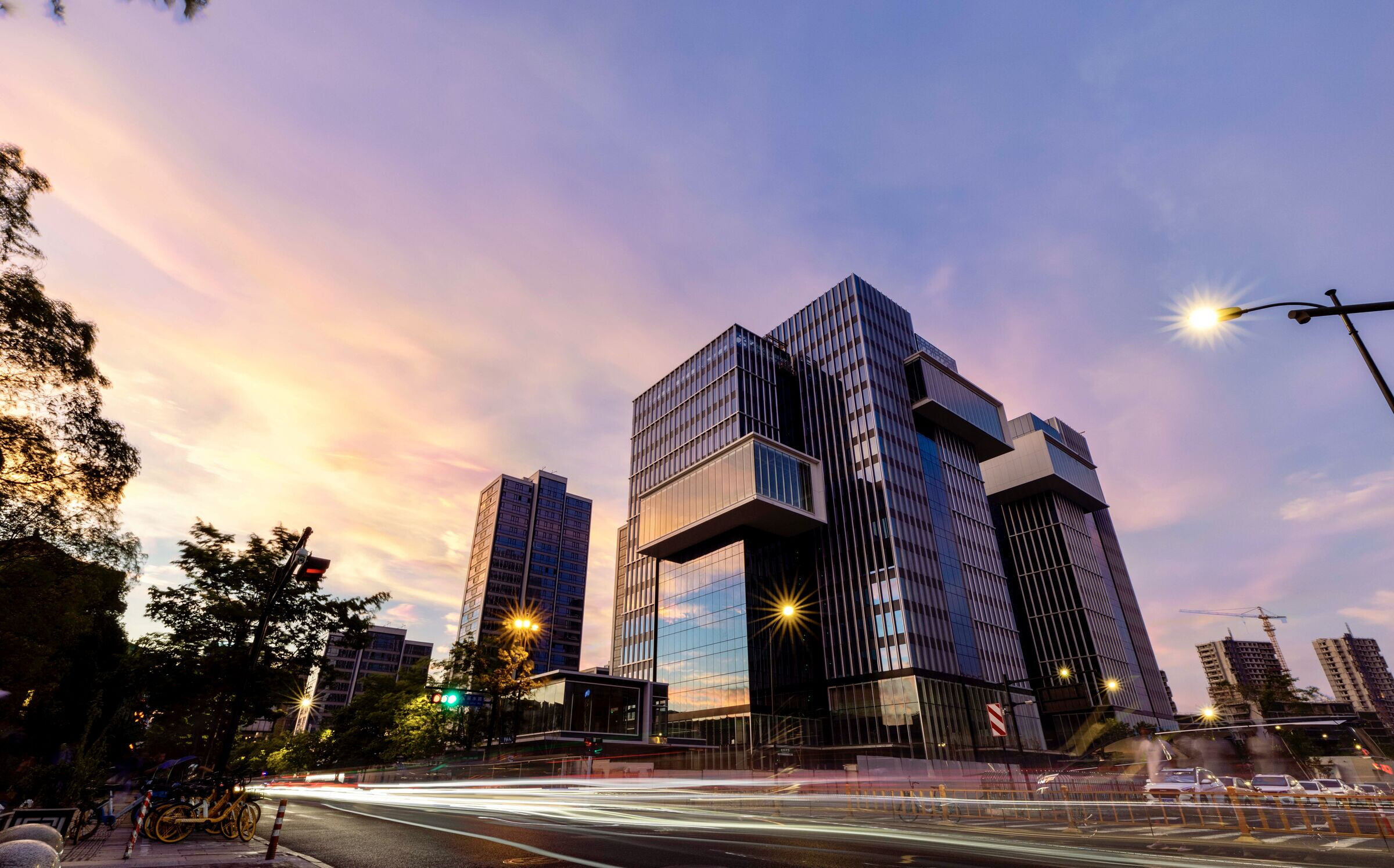
03 Architecture Design:Urban Vitality
The overall planning makes the entire Winland Center not only an abundant and active community, but also a modern urban complex with influence in the scale of a city.Based on the planning, with a unified and coherent design language, ARQ Architects has created a series of pure and concise buildings that share rich relations in lights and shadow, giving the Winland Center a modern and fashionable urban vitality atmosphere.
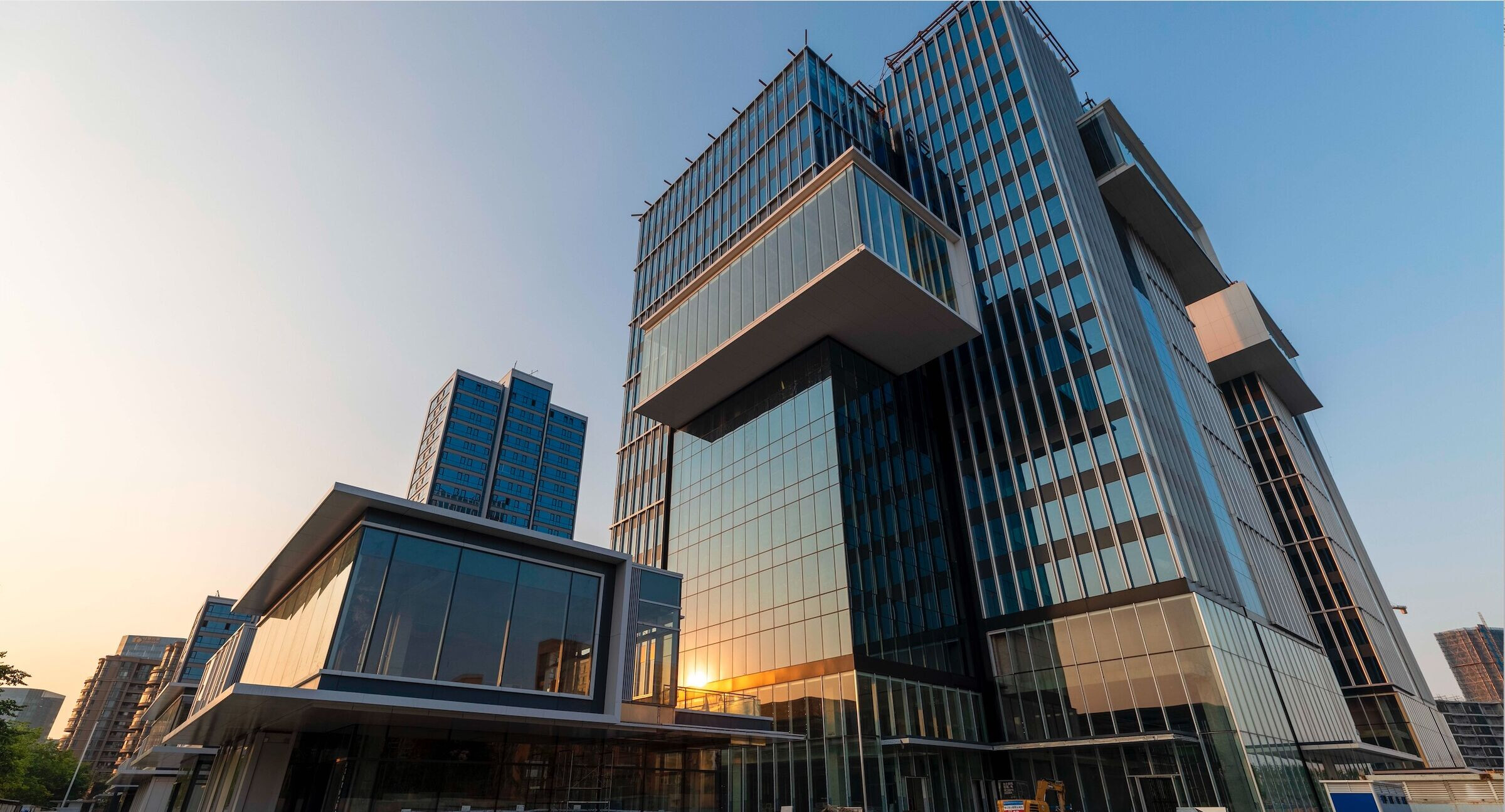
Office towers
The office space of the project is mainly concentrated in the two towers, with one in the east and the other in the west. It aims to create a new living and working environment that shares the characteristics of new economy, new concept, freedom, flexibility and new living and working environment. At the same time, the design makes full use of the landscape resources of Xiangji Temple and the Grand Canal. With the planar method applied on the design of the facade, the gigantic width and volume of the tower is eliminated. And at the same time, it simulates a dialogue on the form between the huge tower and Xiangji Temple.Each office tower is composed of 7 different volumes. Among them, the four towers are merged and overlapped on the plane. Through the effective combination of the cores, a more efficient and flexible space is obtained, and they are scattered in the vertical direction to form a differentiated façade. While the three transparent glass boxes are cantilevered above the tower, breaking through the boundaries of the main body of the building. It also creates unconventional interior spaces and enriches the spatial relationship within the towers. With these transparent boxes, people can enjoy the unique experience of hovering in the air and appreciate the beautiful scenery along the Beijing-Hangzhou Grand Canal.

Commercial Square
The commercial space of the project is in the form of an open block, which makes full use of the public space in the project and introduces the flow of people around the base to the central square from all directions. This open commercial block has brought diversified and multiple commercial formats - different formats in forms and scale complement each other, which not only meets the needs of citizens' daily life, such as consumption and entertainment, but also connects with the city and maximizes the business value of the space. Considering the different flows formed by residents, office staff and customers, the design utilizes the method of designing modern commercial space to arrange the flow lines. With the full usage of the ground and underground space, an interior commercial flow line and an outdoor commercial pedestrian street are created. It creates a more comfortable and convenient shopping environment for customers.

Gallery street
Gallery Street, as the commercial display section along the street on the west side of the Complex, is created by 4 groups of two-storey buildings. Its architectural design continues the design language of the office tower. The whole Gallery Street is divided into two forms of volume - the pure white box and the cantilevered glass box. While combining the functions of art works storage and display, each Volume overlaps and intersects with each other in shape, forming a rhythmic façade along the street. This design not only matches the architectural image of the office tower, but also creates a friendly dialogue with Xiangji Temple.
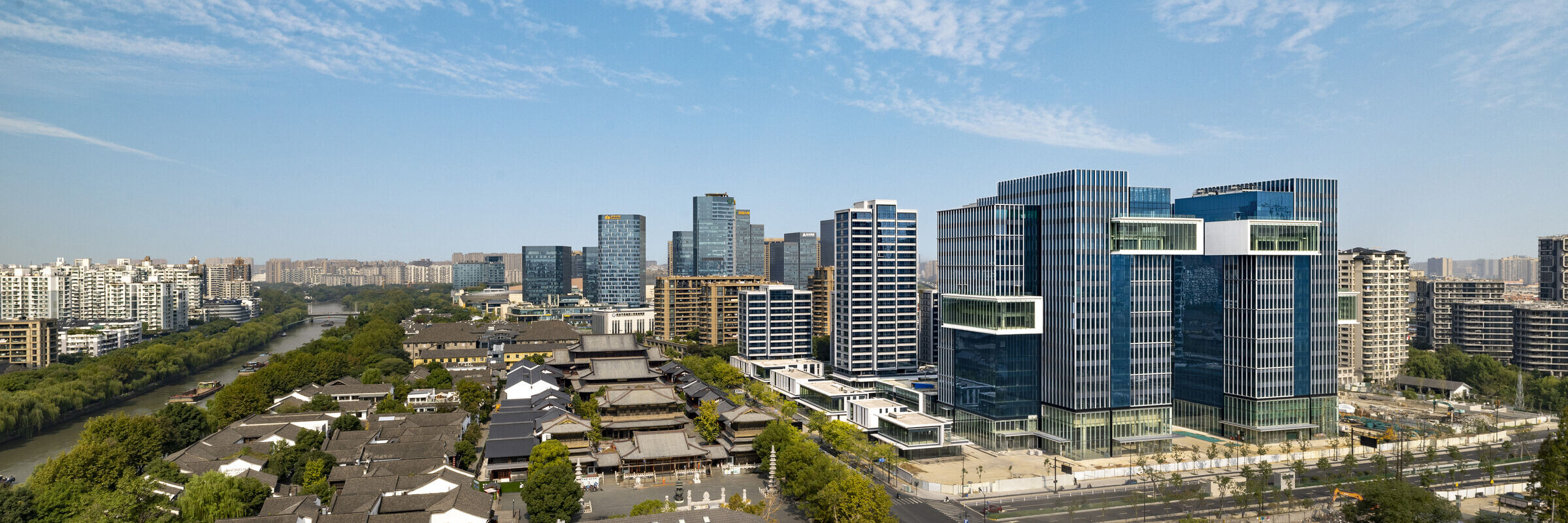
Team:
Clients: Winland Group
Architects: ARQUITECTONICA, Farrells
LDI: UAD(The Architectural Design & Research Institute of Zhejiang University
Lead Designer: Bernardo Fort-Brescia, Stefan Krummeck
Structure: Arup, UAD
Landscape: Adrian L. Norman Limited
Interior: CL3, Kinetices Interior Decoration Ltd.Revery Architecture Inc.
Lighting: Georges Berne & 8'18''(HUIT MINUTES DIX HUIT SECONDES),LEOX
MEP: WSP, UAD
Facade: Shanghai PFT Construction Consulting Co. Ltd.
Construction: Nantong Three Construction Holding Co., Ltd, China Railway Construction Group Co., Ltd., Shanghai Fuyi Façade Engineering Co., Ltd.
Participant on Cencept:
ARQUITECTONICA, Farrells, aaaChina GmbH, architectenbureau cepezed b.v., Moatti-Riviere, Nieto Sobejano Arquitectos GmbH, UAD, Unitown Design Inc.
Photography & Video: Winland Group


































